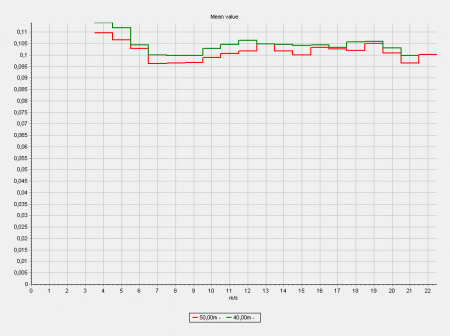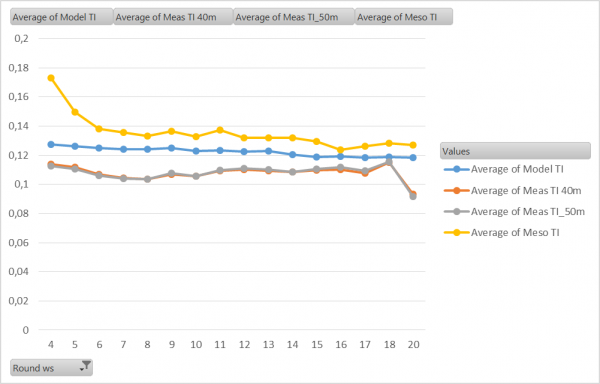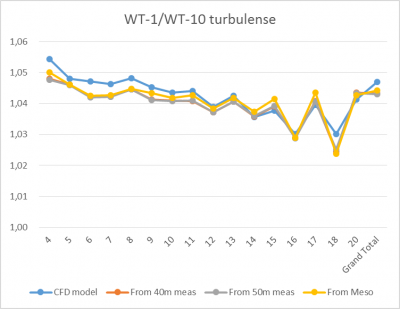Test Turbulenzskalierung (Englisch)
Test of Turbulence scaling
With the SCALER and time step PARK calculation, it is possible to establish the turbulence for each time step at each WTG position in hub height, see PARK: Register Wake (German) or section 4.8.4 in English PDF manual. This can partly be used for turbulence correction of the power curve (only pitch regulated turbines) and partly to control the WDC in wake loss calculations.
The site mast with measurements, turbulence in 40 m and 50 m
Below the different variants of establishing the turbulence by SCALER calculations at a specific turbine position is tested.
Turbulence calculated at WTG-1 at 47 m hub height from different sources.
As seen the calculated turbulence based on 40 m as well as 50 m measurements is exact the same. This show the model perform the transformation correct based on different heights.
The Model calculated TI is based on WAsP CFD model results. This comes out with slightly higher turbulence than measured. Finally, the TI taken from MESO data (EMDConWx) is shown. This is again some higher than the measurements. Overall not very large deviations.
To test the calculation concept more comprehensive, the calculated TI at two different turbines is tested. At WT-10 the calculated (free) wind speed is 5% higher than at WT-1, therefore round 5% lower calculated TI are expected at WT-10.
The ratio of TI at WT-1 and WT-10 with different calculation settings
As seen, the result comes out reasonable as expected. The calculated TI is 3-5% higher at WT-1 than at WT-10. In addition, it work similar based on all 4 described calculation settings.
It is hereby shown that the SCALER calculates the TI at different positions as expected. The accuracy of the calculated turbulence will although not be more precise than the data and models behind. In some terrain, the real turbulence might differ more than the model calculations show.


